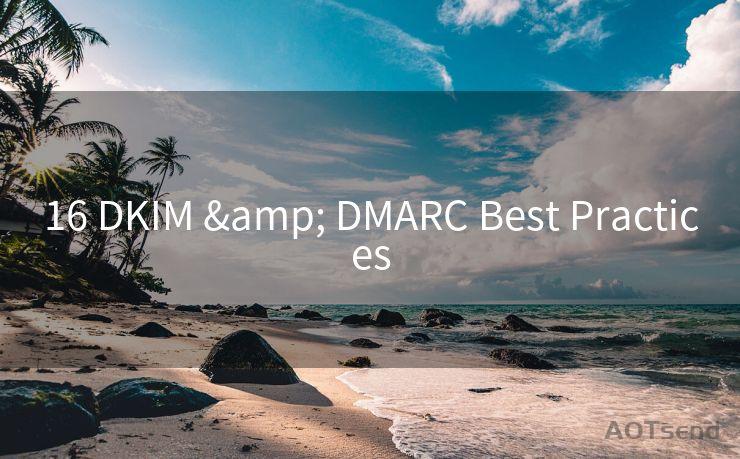16 DKIM & DMARC Best Practices




Email remains a crucial communication tool in today's digital world, but it's also a common entry point for cyberattacks. To enhance email security, two important protocols have emerged: DKIM (DomainKeys Identified Mail) and DMARC (Domain-based Message Authentication, Reporting, and Conformance). In this blog, we'll explore 16 best practices for implementing DKIM and DMARC to protect your organization's email communications.
1. Understanding DKIM
DKIM (DomainKeys Identified Mail) is an email authentication technique that allows the receiver to check that an email was indeed sent and authorized by the owner of the sending domain. It works by adding a digital signature to the email's header, which is then verified by the receiving server.
Best Practices for DKIM:
- Generate Strong Keys: Use long and complex keys for signing your emails.
- Regular Key Rotation: Rotate your DKIM keys periodically to maintain security.
- Align With Your DNS Provider: Ensure your DNS provider supports DKIM and can host your public key.
2. Implementing DMARC
DMARC (Domain-based Message Authentication, Reporting, and Conformance) builds upon DKIM and SPF (Sender Policy Framework) to provide a policy framework for domain owners to specify how unauthenticated emails should be handled.
Best Practices for DMARC:
- Define a Clear Policy: Set a DMARC policy that aligns with your organization's security needs.
- Gradual Deployment: Start with a monitoring policy and gradually move to a rejection policy.
- Utilize Reporting: Enable DMARC reporting to gain insights into your email authentication status.
3. Combining DKIM and DMARC
For maximum effectiveness, DKIM and DMARC should be used together.
Best Practices for Combining DKIM and DMARC:
- Consistent Configuration: Ensure both DKIM and DMARC are correctly configured for all your email domains.
- Regular Auditing: Periodically review your DKIM and DMARC settings to ensure they're up to date.
4. Troubleshooting and Monitoring
Implementing DKIM and DMARC is just the first step; monitoring and troubleshooting are crucial for maintaining a secure email environment.
Best Practices for Troubleshooting and Monitoring:
- Monitor Reports: Regularly review DMARC reports to identify any authentication issues.
- Validate Configurations: Use online tools to validate your DKIM and DMARC configurations.
- Respond to Failures: Swiftly address any authentication failures identified through monitoring.
5. Staying Up to Date
As email security standards evolve, it's essential to keep your DKIM and DMARC implementations up to date.
Best Practices for Staying Up to Date:
- Follow Industry Trends: Stay informed about the latest developments in email authentication.
- Update Implementations: Adjust your DKIM and DMARC settings as new best practices emerge.
By following these 16 best practices for DKIM and DMARC, you can significantly enhance your organization's email security and reduce the risk of spoofing and phishing attacks. Remember, email security is an ongoing process, and staying vigilant and up to date is key.

🔔🔔🔔
【AOTsend Email API】:AOTsend is a Managed Email Service for sending transactional emails. Support Email Types: reminders, authentication, confirmations, notifications, verification codes, invoices, password resets, account activations, billing statements, two-factor authentication (2FA), and one-time passwords (OTP) emails, etc. $0.28 per 1000 Emails. 99% Delivery, 98% Inbox Rate.
You might be interested in:
Why did we start the AOTsend project, Brand Story?
What is a Managed Email API, How it Works?
Best 25+ Email Marketing Platforms (Authority,Keywords&Traffic Comparison)
Best 24+ Email Marketing Service (Price, Pros&Cons Comparison)
Email APIs vs SMTP: How they Works, Any Difference?




Scan the QR code to access on your mobile device.
Copyright notice: This article is published by AotSend. Reproduction requires attribution.
Article Link:https://www.mailwot.com/p5906.html



